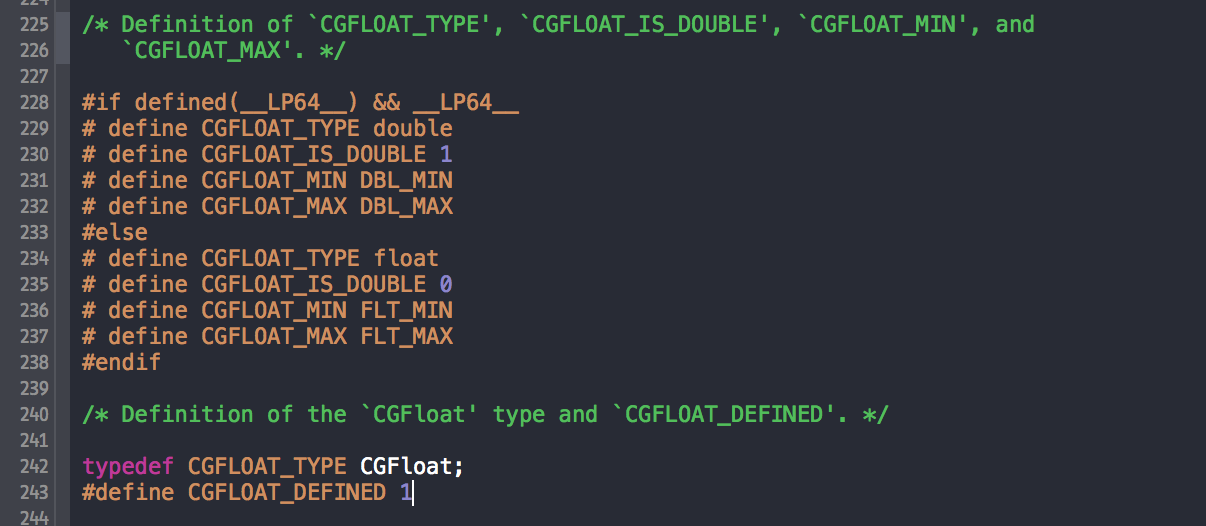How would you explain the following code never getting into the if clause? Bear in mind I already knew it to be true at least once. I was an absolute true.
for (UIView *subview in view.subviews)
{
CGFloat subviewAlpha = subview.alpha;
CGFloat myAlpha = 0.15f;
if (subviewAlpha == myAlpha &&
[subview isKindOfClass:NSClassFromString(@"_UIPopoverViewBackgroundComponentView")])
{
subview.alpha = 0.f;
}
}
Printing the value also proved to be pointless:
NSLog(@"%f", subviewAlpha);
// output: 0.150000
NSLog(@"%f", myAlpha);
// output: 0.150000
Finally, XCode’s debugger shed a dim of light to the real issue. It showed that the true value of subviewAlpha is 0.14999999999999999, and as a floating point it’s accurate. Meanwhile the value of myAlpha was 0.15000000596046448, so logically they are different. But what could be causing this singularity?
Jumping to CGFloat definition, we can see that it may be an alias to float or double, depending on the system’s architecture (x32 or x64). As I neglected to search, Apple had it documented and it could have saved me some time (thanks @gustavocsb, for the link).
As usual, I solved it the more elegant way I could. “Hey, if CGFloat is bipolar, let it tell me how to read it!”
for (UIView *subview in view.subviews)
{
if (subview.alpha == (CGFloat)0.15 &&
[subview isKindOfClass:NSClassFromString(@"_UIPopoverViewBackgroundComponentView")])
{
subview.alpha = 0.f;
}
}
Conclusion, always have in mind that typings and comparisons may not be as obvious as they seem. Be careful and, when in doubt, typecast it.

